Table Of Contents
In this article, we will explore the possibility of steam-cleaning leather, a material known for its luxurious feel and durability. From understanding the different types of leather and how it is made to the benefits and potential risks of steam cleaning, we will delve into the intricacies of maintaining and cleaning the leather using steam.
We will provide essential tips and techniques for properly steam cleaning leather to ensure its longevity and pristine condition. Whether you are a leather enthusiast or seeking effective cleaning solutions, this article aims to provide comprehensive insights into the world of steam-cleaning leather.
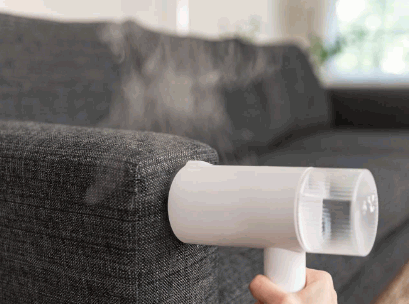
Can Leather Be Steam Cleaned?
When it comes to cleaning leather, one common query is whether steam cleaning is a suitable method for this delicate material.
Steam cleaning can be an effective option for removing dirt and grime from leather without the use of harsh chemicals. The high-temperature steam helps to break down and dissolve the dirt and oil buildup, leaving the leather clean and refreshed. It's important to consider the risks associated with steam cleaning, such as the potential for water damage if not performed correctly.
Professional cleaning services often have the expertise and equipment to safely steam clean leather, minimizing the risks and ensuring thorough cleaning results. Such professional services can help maintain the quality and longevity of leather items by using the appropriate steam cleaning techniques and processes.
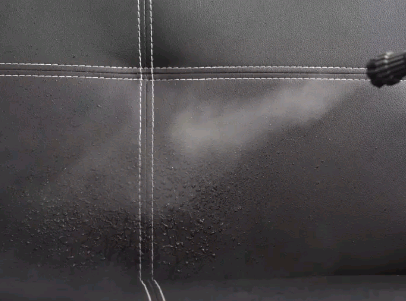
What Is Leather?
Leather is a durable and versatile material known for its unique fabric and exceptional durability, making it a popular choice for various maintenance and care needs.
With its natural flexibility and strength, leather is resistant to tearing, puncturing, and abrasion, making it suitable for a wide range of products, including shoes, bags, and furniture. Its fabric structure consists of intertwined fibers that give it a distinctive texture and grain, adding to its appeal.
Proper maintenance and care are essential to prolong its lifespan and retain its luster, requiring regular cleaning, conditioning, and protection from moisture and heat.
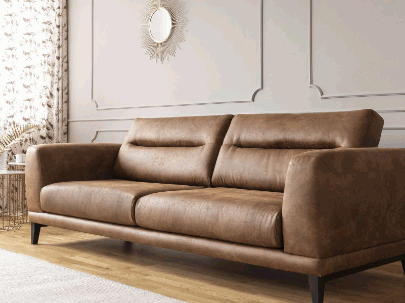
How Is Leather Made?
The process of creating leather involves a meticulous technique that transforms raw material into a refined fabric through specialized treatments and methods.
The initial step is tanning, which typically uses chromium salts, vegetable extracts, or other tanning agents to preserve the leather and prevent it from decaying. Following this, the leather is then conditioned, where it undergoes softening and color enhancement processes.
Subsequently, the leather may be dyed to achieve the desired color before undergoing finishing treatments to enhance its durability, texture, and appearance. Throughout the entire process, skilled artisans carefully monitor each stage to ensure the creation of high-quality leather.
What Are The Different Types Of Leather?
Leather comes in various types, each with its unique characteristics and uses, including full-grain, top-grain, corrected-grain, split, and bonded leather, showcasing the diversity of this material.
Among these, full-grain leather is known for its natural and rugged appearance, as it retains the complete grain of the hide, making it durable and suitable for high-end products like luxury furniture and high-quality accessories. On the other hand, top-grain leather is slightly more processed, offering a smoother surface while maintaining strength, often used in upscale leather goods.
Corrected-grain leather undergoes additional treatment to remove imperfections, resulting in a consistent and affordable option. Split leather, created from the fibrous part of the hide, is utilized in suede production, prized for its soft texture and versatility. Bonded leather, composed of leftover leather fibers, is an economical alternative for furniture upholstery and accessories.
Full-Grain Leather
Full-grain leather stands out for its exceptional durability, natural fabric, and the care and maintenance it demands to retain its pristine condition over time.
This type of leather is treasured for its unique fabric structure featuring the outermost layer of the hide, which showcases the natural grain, imperfections, and distinct markings. The rugged texture and rich patina of full-grain leather develop character over time, adding to its appeal.
Unlike other leather types, full-grain leather ages beautifully, and with proper care, it can last for generations. To maintain its luxurious appearance, regular conditioning with high-quality leather care products is essential, as it helps prevent drying and cracking, ensuring the leather remains supple and lustrous.
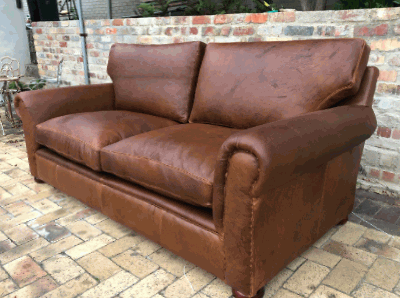
Top-Grain Leather
Top-grain leather is prized for its versatile fabric, making it a popular choice for upholstery and furniture, requiring regular maintenance to preserve its quality and appearance.
It is renowned for its durability and natural characteristics, such as the soft, supple feel and appealing patina that develops over time. Oils and waxes are used to treat the leather, enhancing its resistance to moisture and wear. This type of leather is often used in high-end furniture, luxury car interiors, and premium accessories due to its timeless appeal and ability to age gracefully.
Regular cleaning and conditioning are essential to keep the leather in top condition, ensuring it remains an elegant and enduring choice for upholstery and furniture applications.
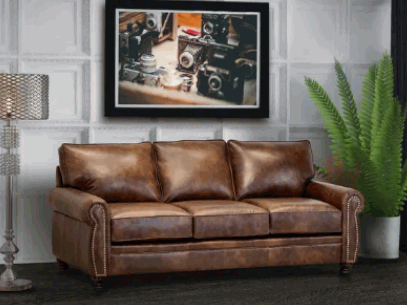
Corrected-Grain Leather
Corrected-grain leather undergoes a specialized treatment process to address imperfections, making it a suitable choice for sensitive materials that demand a refined fabric structure.
During the treatment process, the leather is sanded to remove any blemishes, and an artificial grain is embossed onto the surface to create a uniform appearance. This results in a smooth and consistent texture, ideal for sensitive materials such as high-quality furniture, luxury car interiors, and designer handbags.
The leather's durability and resistance to wear and tear make it a popular choice for items that require both elegance and longevity.

Split Leather
Split leather, known for its versatility, requires controlled moisture levels and proper air drying, along with conditioning treatments to maintain its optimal fabric condition.
This type of leather, often used for a variety of products including footwear, bags, and upholstery, needs to be protected from excessive exposure to moisture to prevent damage and maintain its strength and durability.
Air drying is a crucial step in the care of split leather, as it helps to retain the material's integrity and prevent it from becoming brittle. Conditioning treatments are essential to replenish natural oils and maintain the suppleness of the leather, ensuring that it remains soft and pliable over time.

Bonded Leather
Bonded leather, with its composite fabric, demands specialized cleaning and protective measures to ensure effective restoration and preservation of its surface integrity.
Experts recommend using a gentle, pH-balanced cleaner designed specifically for bonded leather to remove dirt and stains without causing damage. It is vital to avoid harsh chemicals or abrasives that could compromise the material's structure.
Regular conditioning with a suitable leather conditioner helps to maintain its suppleness and prevent cracking. Implementing these practices can significantly extend the lifespan of bonded leather furniture and accessories, keeping them looking pristine for years to come.
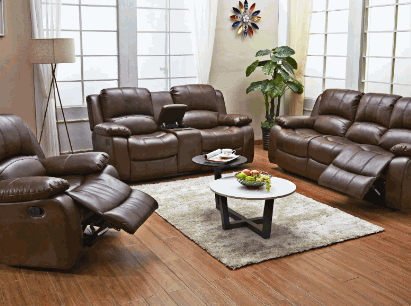
What Are The Benefits Of Steam Cleaning Leather?
Steam cleaning leather offers a range of benefits, including its gentle yet effective process, particularly suitable for upholstery, furniture, and professional treatment to protect and restore the material.
This method utilizes water vapor to gently penetrate the leather, effectively lifting dirt, grime, and impurities without the need for harsh chemicals. It is especially advantageous for delicate leather surfaces, as it helps preserve the material's natural oils and softness.
Steam cleaning is an ideal solution for removing stubborn stains and odors, leaving your upholstery and furniture looking revitalized and smelling fresh. Its professional treatment ensures thorough cleaning and helps prolong the lifespan of your leather items.
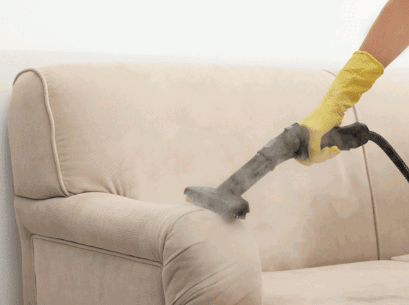
Gentle And Effective Cleaning
Steam cleaning ensures gentle and effective cleaning for leather, particularly benefiting upholstery and furniture with its non-abrasive yet thorough approach.
The non-abrasive nature of steam cleaning makes it ideal for delicate materials such as leather, as it effectively removes dirt and grime without causing damage. It penetrates deep into the fibers, lifting away dirt and stains without the need for harsh chemicals or abrasive scrubbing. This method is particularly suitable for maintaining the beauty and integrity of upholstered furniture, as it gently revitalizes the fabric without causing any harm.
Removes Deep-Down Dirt And Stains
The steam cleaning process is adept at removing deep-down dirt and stubborn stains from leather, making it an ideal choice for professional cleaning treatments.
This method uses high-temperature steam to penetrate deep into the pores of the leather, effectively dissolving and lifting away dirt, grime, and tough stains. The heat not only cleans the surface but also sanitizes it, eliminating bacteria and allergens. Its gentle nature makes it suitable for various types of leather, ensuring that the cleaning process does not damage or degrade the material.
Professional cleaners often rely on steam cleaning to restore the luster and cleanliness of leather surfaces with impressive results.
Kills Bacteria And Allergens
Steam cleaning not only cleans but also effectively kills bacteria and allergens, providing a protective treatment for the leather fabric.
This method works by using high-temperature steam to penetrate the pores of the leather, effectively eliminating any hidden bacteria and allergens. The thermal energy of the steam also helps to break down dirt and grime, ensuring a thorough cleaning process without the use of harsh chemicals.
Steam cleaning can help preserve the natural oils and texture of the leather, maintaining its softness and luster while providing a protective barrier against future contaminants.
No Harsh Chemicals
One of the key benefits of steam cleaning is the absence of harsh chemicals, offering gentle yet professional treatment for the leather surface without causing any harm.
The use of steam ensures that the natural fibers of the leather remain intact, maintaining its softness and luster. This method effectively removes dirt, grime, and bacteria without compromising the structural integrity of the material.
Steam cleaning also helps to prevent the leather from drying out or developing cracks, making it a safe and reliable option for maintaining the beauty and longevity of leather surfaces.
What Are The Risks Of Steam Cleaning Leather?
While steam cleaning offers numerous benefits, there are potential risks such as damage, discoloration, and fading, especially if excessive moisture, heat, water, or conditioner is involved.
Excessive moisture can weaken the fibers of the upholstery, leading to structural damage and compromising its integrity. Intense heat from the steam cleaning process can cause colors to fade or bleed, altering the appearance of the fabric. In some cases, the use of improper cleaning products or excessive water can result in permanent discoloration.
The conditioner used during the process may also leave behind residues, attracting dirt and causing further damage. Therefore, it is crucial to consider these risks and ensure proper precautions are taken when steam cleaning upholstery.
Damage To The Leather
Excessive moisture or incorrect cleaning techniques during steam cleaning can lead to severe damage to the leather, necessitating professional treatments for restoration.
The high heat and moisture from steam cleaning can cause the leather to become warped, hardened, or discolored. If not dried properly, mold and mildew may develop, further compromising the material.
Professional leather treatments involve specialized cleaning solutions and techniques to gently remove stains and moisture without harming the leather's natural qualities. Trusting experts ensure that the leather is carefully restored to its original condition, preserving its longevity and aesthetic appeal.
Discoloration Or Fading
Improper use of conditioners or protectants during steam cleaning can result in discoloration or fading of the leather, impacting its overall appearance and texture.
This is particularly important because the use of unsuitable products can lead to the formation of unsightly stains or patches on the leather surface, detracting from its aesthetic appeal. The texture of the leather may become compromised, leading to a loss of its supple and luxurious feel.
It's essential to choose conditioners and protectants specifically formulated for use with steam cleaning methods to ensure the leather maintains its natural luster and resilience.
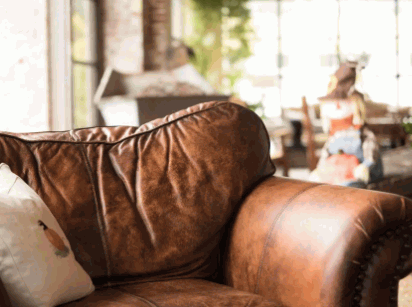
Loss Of Natural Oils And Moisture
Inappropriate steam cleaning practices can lead to the loss of natural oils and moisture in the leather, necessitating air drying and conditioning, and in some cases, professional cleaning for restoration.
When natural oils and moisture are stripped from leather during steam cleaning, the material becomes susceptible to drying out, cracking, and losing its suppleness. It is crucial to allow the leather to air dry thoroughly to prevent further damage. Regular conditioning is essential to replenish lost oils and maintain the leather's softness and luster.
For extensive damage, seeking professional cleaning services is recommended to effectively restore the leather's natural properties and prolong its lifespan.
How To Properly Steam Clean Leather?
Properly steam cleaning leather involves precise preparation, selecting the right steam cleaner, conducting small area tests, and ensuring thorough drying and conditioning for optimal results.
Preparing the leather surface is crucial before starting the steam cleaning process. Begin by removing any surface dust or dirt with a soft brush or vacuum attachment. Then, select a steam cleaner specifically designed for use on leather.
Prior to full cleaning, it's essential to conduct a small area test to ensure the leather reacts well to the steam and that there are no adverse effects. Once cleaning is complete, allow the leather to dry thoroughly before conditioning it to maintain its softness and suppleness.
Explore: How Do You Clean Leather Car Seats
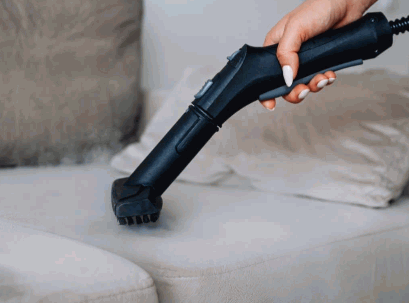
Prep The Leather
Before steam cleaning, proper preparation of the leather is crucial, involving gentle maintenance practices to ensure its suitability for the cleaning process.
This includes regular conditioning to keep the leather supple and to prevent it from drying out. Gentle cleaning with a soft cloth or sponge to remove any surface dirt or debris is necessary. It's important to test any cleaning products on a small, inconspicuous area to ensure they won't damage the leather. Preparing the leather in this way will help to maintain its natural properties during the steam cleaning process and ensure a successful outcome.
Use The Right Steam Cleaner
Selecting the appropriate steam cleaner is vital for the cleaning process, ensuring its suitability for professional treatments and gentle fabric protection.
A high-quality steam cleaner designed specifically for leather not only effectively removes dirt and grime but also ensures that the delicate material is not damaged during the cleaning process.
Professional-grade steam cleaners offer the right combination of steam temperature and pressure to effectively clean leather surfaces without causing any harm. A suitable steam cleaner provides a thorough and efficient cleaning process, saving time and effort while ensuring the leather is protected and maintains its natural beauty.
Test On A Small Area
Prior to full-scale steam cleaning, conducting a test on a small area of the leather fabric is essential to assess the impact and effectiveness of the process and any applied protectants or conditioners.
This small area testing provides valuable insights into how the leather fabric will react to the steam cleaning process and any protective treatments. It allows for adjustments to be made if needed, ensuring that the cleaning procedure will not cause any adverse effects on the leather.
Testing the protectants or conditioners on a small area helps in determining their suitability and effectiveness in preserving the leather's quality and extending its lifespan. Proper evaluation during this testing phase can prevent potential damage and ensure optimal cleaning results for the entire fabric.
Steam Clean The Leather
The actual steam cleaning process involves meticulous attention to detail, ensuring gentle yet effective treatment to protect the leather fabric's integrity.
The process begins by carefully vacuuming the leather to remove any loose dirt or debris. Then, a specialized leather cleaning solution is applied to the fabric, followed by gentle steam cleaning using a low-pressure setting to avoid damaging the material. After the cleaning, the leather is thoroughly dried to prevent any moisture damage.
A quality leather conditioner is applied to restore moisture and nourish the fabric, leaving it supple and rejuvenated.
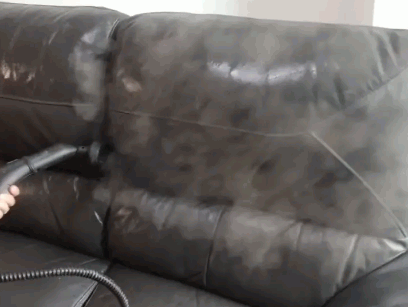
Dry And Condition The Leather
After steam cleaning, proper drying and conditioning are essential maintenance steps to safeguard the leather from potential moisture-related issues, often requiring professional cleaning for comprehensive treatment.
This process is crucial as inadequate drying can lead to mildew or mold growth, causing irreversible damage to the leather. Conditioning is equally important to restore natural oils and maintain the leather's suppleness.
In cases of excessive moisture exposure, seeking professional cleaning services becomes necessary to address any lingering issues and prevent long-term damage. Therefore, following these post-steam cleaning care requirements is vital to ensure the longevity and durability of your leather goods."


